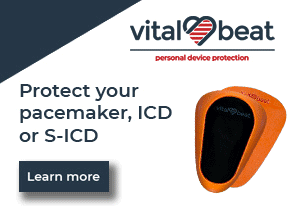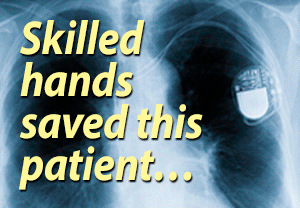 More Info
More Info
I thought some of you may enjoy the following as it discusses the devices and heart problems we discuss here daily. Part of it came from Medtronic (for some reason I'm on their mailing list - I;m kidding I asked to be put on the list) and the last two paragraphs are from another article on the subject of
CRT (cardiac resynchronization therapy)
Heart Devices
Did you know that there are different heart devices that treat different heart conditions? When people think of a heart device the first thing that comes to mind is a pacemaker. While a pacemaker is one heart device there are also ICDs and CRT heart devices.
To help you understand what each device treats and how it works, we have highlighted three devices.
Pacemaker
A pacemaker is designed to mimic the heart's natural pacemaker, the sinus node. It treats a condition called bradycardia, a condition where the heart beats too slowly. The pacemaker has two main purposes - pacing and sensing.
Pacing: A pacemaker will send an electrical impulse to the heart through a pacing lead, when the hearts own rhythm is too slow or interrupted. This pacing pulse starts a heartbeat.
Sensing: A pacemaker will also sense (monitor) the heart's natural electrical activity. When the pacemaker senses a natural heartbeat, it will not deliver a pulse.
ICD (implantable defibrillator)
An implantable defibrillator is designed to monitor your heart rhythm 24 hours a day. If your heart is beating too fast, the device will first send small painless electrical signals to correct your heart rate. If the dangerously fast heart continues, the defibrillator will attempt to restore a lifesaving shock to restore your heart to a normal rate. The implantable defibrillator can also treat slow heart rhythms by sending electrical pulses to the heart to correct it.
An ICD is designed to treat people with tachycardia, a condition where the heart beats too fast.
CRT (cardiac resynchronization therapy)
A cardiac resynchronization therapy device is designed to monitor your heart rhythm 24 hours a day. It provides electrical pulses to pace the lower chambers of your heart to help them beat in a more coordinated rhythm. This coordinating or "resynchronization" therapy improves the heart's ability to pump blood and oxygen more efficiently to the body.
The most common condition a CRT heart device treats is heart failure. This is a condition where the heart muscle is weakened and is not able to efficiently pump enough blood to meet the body's needs. This condition is called congestive heart failure, or CHF.
More than 22 million people worldwide suffer from congestive heart failure (CHF), a potentially debilitating disease. Until recently, lifestyle changes, medication and, sometimes, heart surgery were the only treatment options. Patients with severe symptoms, however, received little, if any, relief from such approaches. To make matters worse, up to 40 percent of patients with CHF also have an arrhythmia that further reduces the hearts ability to beat properly.
Cardiac resynchronization therapy (CRT) is an innovative new therapy that can relieve CHF symptoms by improving the coordination of the hearts contractions.CRT builds on the technology used in pacemakers and implantable cardioverter devices. CRT devices also can protect the patient from slow and fast heart rhythms.
1 Comments
You know you're wired when...
Your old device becomes a paper weight for your desk.
Member Quotes
I consider my device to be so reliable, that I never think about a failure.

.png)



CRT pacemaker
by Pacey - 2009-03-06 07:03:42
thanks for posting this great info
whenever I tell people online I have a CRT pacemaker they never understand now I will just post a link to this post here